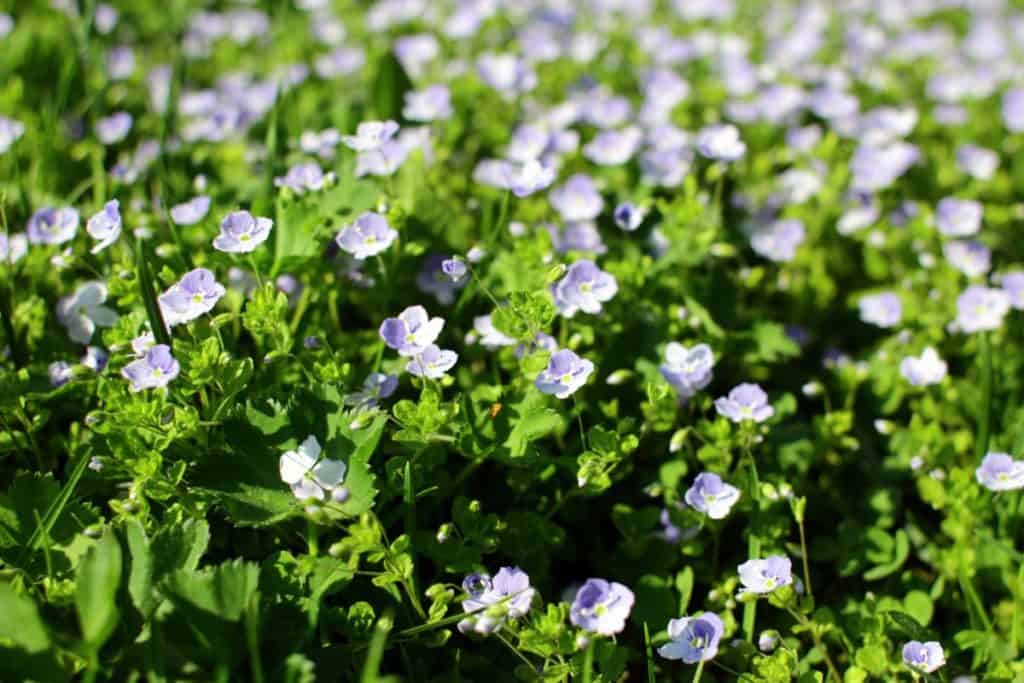Ground covers are a great way to add life to an area of your garden that gets a lot of sun. They can also help prevent erosion. The problem is that a lot of ground covers don’t do well in sand.
Here are 14 ground covers that grow well in sand:
- Japanese Spurge (Pachysandra terminalis)
- Bugleweed (Ajuga reptans)
- Purple wintercreeper (Euonymus fortunei)
- English Ivy
- Lemon balm (Melissa officinalis)
- Oregano
- Thyme
- Bugloss (Boraginaceae)
- Dwarf fountain grass (Pennisetum alopecuroides)
- Goutweed (Aegopodium podagraria)
- Hedge parsley (Torilis arvensis)
- Sweet woodruff (Galium odoratum)
- Speedwell (Veronica filiformis)
Let’s look at each of these plants in a little more detail.
1. Japanese Spurge (Pachysandra terminalis)
The first one we’re going to talk about is the Japanese Spurge. It will thrive in the sun or shade and grow well in sand. It blooms with small white flowers in the spring and has dark green leaves.
This ground cover can grow up to three feet tall, making it perfect for covering a large area quickly! If you’re looking for something that will fill in an area fast, this might be the best choice for your garden.
The downside to Japanese Spurge is that it’s not very drought-tolerant. So, if you live in a dry climate or don’t have time to water your plants regularly, this might not be the best choice for you.
Like English Ivy (see below nr. 4), this ground cover is also susceptible to pests and diseases. So, you may consider another option if you’re looking for a resilient plant.
Fortunately, these are all things you can treat with pesticides or fungicides. If you want to avoid using chemicals on your plants, then be sure not to over-water them, so they don’t get any diseases.
For best results, plant this ground cover in the spring or fall when temperatures are cooler, and there’s plenty of rain. Its roots spread deep, so be sure to plant it where there’s enough room for them to grow.
You can use this ground cover to prevent soil erosion on a slope or cover an area that’s difficult to mow. That’s because it grows low to the ground and doesn’t require much maintenance. Just be sure to water it regularly during the first few months after planting to help it get established.

2. Bugleweed (Ajuga reptans)
Bugleweed is another ground cover that grows well in sand. It prefers moist, well-drained soil, but it can also tolerate dry conditions and drought once established. The plant blooms in the spring and fall, with purple flowers which attract butterflies to your garden!
The size of this plant can vary depending on the variety, but it typically grows between 12 and 18 inches (30.48 and 45.72 cm) tall. It’s a great choice if you’re looking for something that will quickly fill in an area.
Bugleweed does best in full sun to partial shade. It doesn’t require much maintenance and is resistant to pests and diseases. So, you’ll never have to worry about getting sick or being attacked by bugs.
Some people might not like the way bugleweed smells because it has a strong, minty scent that some find overwhelming. But this is a great plant to consider if you can get over the smell!

3. Purple Wintercreeper (Euonymus fortunei)
Purple wintercreeper is a ground cover that does well in the sun or shade. It’s drought-tolerant and can grow in various soil types, including sand. The plant blooms with small white flowers in the spring, and it has dark purple leaves.
This plant grows quickly, reaching up to 18 inches (30.48 cm) in height. It’s a great choice if you’re looking for something that will quickly cover an area, and since it does well in shade or sun, it’s perfect for any garden!
Purple wintercreeper is resistant to pests and diseases and doesn’t require much maintenance. Just be sure to water it regularly during the first few months after planting to help it get established.
The downside to this plant is that it can be invasive. If you’re not careful, it can spread quickly and take over your garden. So, if you’re looking for a ground cover that’s easy to control, a purple wintercreeper might not be the best choice for you.
The ideal time to plant this ground cover is spring or fall. It will take about three months to reach its full height, so if you want something that grows faster, consider another option like English Ivy or Japanese Spurge (see below).
If you decide on a purple wintercreeper as your ground cover, just be sure to keep an eye on it and pull up any shoots that start to grow in unwanted areas.
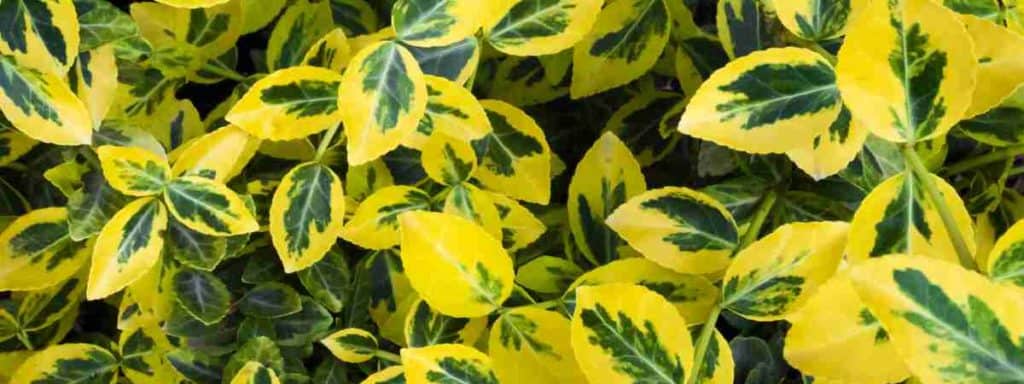
4. English Ivy
English Ivy is a well-known ground cover that grows quickly and can tolerate a variety of soil types, including sand. It does best in partial shade, but it can grow in full sun if you water it regularly. The plant blooms with small white flowers in the spring and has dark green leaves, which give it its name.
If you’re looking for something that will quickly fill in an area, this might be the best choice for your garden.
The downside to English Ivy is that it’s not very drought-tolerant. So, if you live in a dry climate and don’t have time to water your plants regularly, this might not be the best choice for you.
English Ivy is also susceptible to pests and diseases. Things like aphids, scale insects, and whiteflies can damage the plant. So, you may consider another option if you’re looking for a hardy ground cover.
The ideal time to plant this ground cover is in the spring or fall when temperatures are cooler, and there’s plenty of rain. Its roots spread deep, so be sure to plant it where there’s enough room for them to grow.

5. Lemon Balm (Melissa officinalis)
Lemon Balm is a perennial herb that grows well in the sun or shade and can tolerate loose loam and sandy loam soil. The plant has small white flowers and leaves scented with a lemony aroma.
This ground cover can grow up to two feet tall and spread out to cover a large space. It’s perfect for areas that are difficult to mow or to prevent soil erosion on a slope.
Lemon Balm is also drought-tolerant and pest-resistant, making it an excellent choice for people who don’t have time to water their plants regularly.
The only downside to lemon balm is that it can be invasive if not kept in check. So, you may consider another option if you’re not willing to monitor it.
This plant loves neutral soils, so you can plant it in areas where the pH is between six and seven. For the best results, water the plant regularly during the first few weeks after planting.
If you want to make lemon balm more attractive, try planting it next to plants with bright colors like red or yellow flowers. The contrast will bring attention to your plant and make it stand out from other ground covers in your garden!
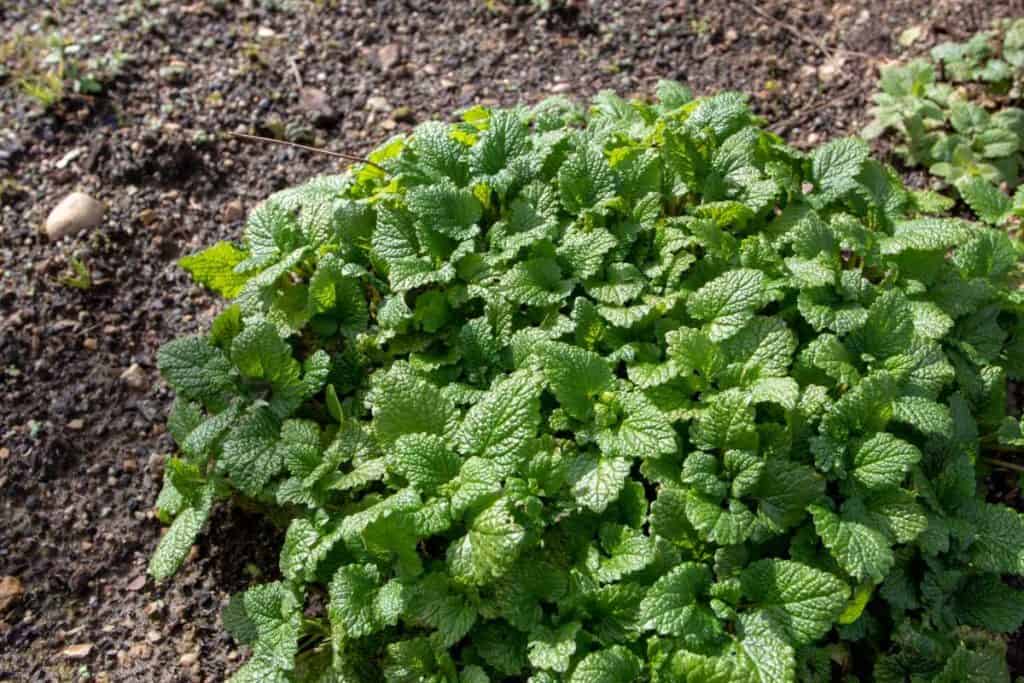
6. Oregano
Oregano is well known for its culinary uses, making an excellent ground cover! It is native to Mediterranean countries like Greece and Italy, where it grows on hillsides and in gardens throughout Europe.
This plant has small white flowers and leaves scented with an aromatic aroma. Oregano loves full sun, can tolerate light or partial shade and prefers moist conditions. However, it is drought-resistant once established in the garden.
Oregano grows low to the ground and can spread out to cover a large area, making it perfect for areas that are difficult to mow or for preventing soil erosion on a slope. This plant also attracts pollinators like bees and butterflies when in bloom.
This ground cover is a hardy plant that can grow in most soils but prefers neutral or alkaline soil with good drainage. This ground cover can be started with seeds or by dividing existing plants.
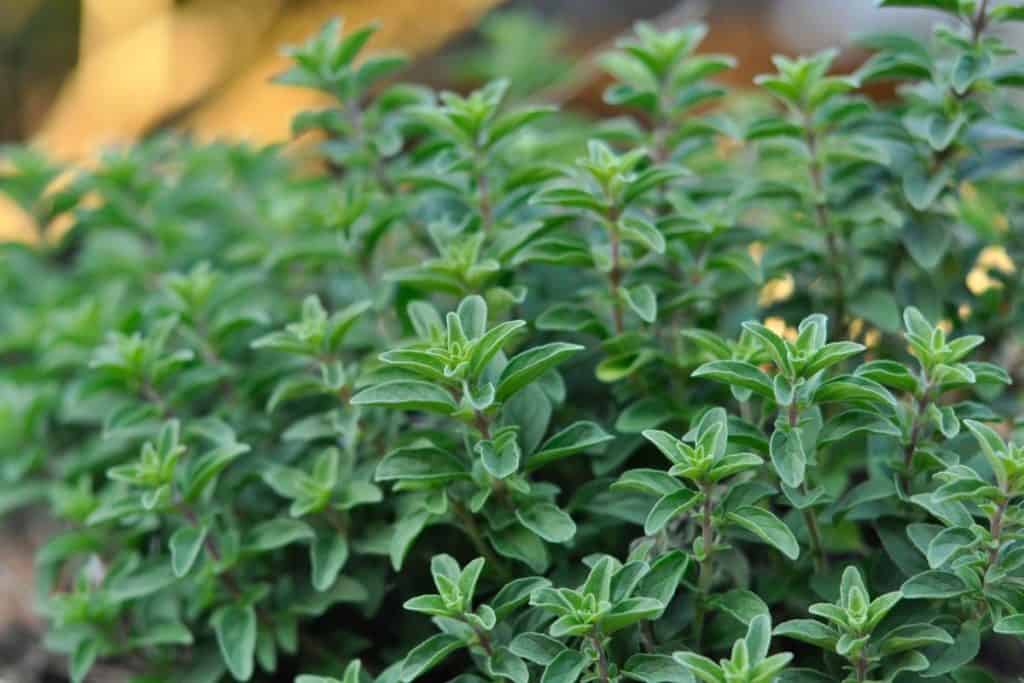
7. Thyme
Thyme is another ground cover that you can use for culinary purposes! This perennial herb is native to Eurasia and grows well in sunny or shady areas.
This plant has small leaves that cascade down to the ground. It looks best when planted in a small space with other plants of different heights.
To use thyme as a ground cover, plant it in full sun conditions or partial shade so that it gets about eight hours of direct sunlight for optimal growth and flowering potentials (although not necessarily required). And the soil should be moist but well-drained.
However, watch out for thyme’s tendency to spread rapidly. If you’re not careful, it can take over your garden in no time!
Thyme is also susceptible to fungal disease and root rot, so don’t plant it too close together with other plants or in areas with water drainage issues. It does best when grown on raised beds—which helps prevent root rot.
Thyme grows best in zones four through nine, with some varieties being harder than others (up to Zone 11). Its height ranges between 3 feet (0.91 meter) tall and wide, depending on how you prune them back each year, during their short growing season (springtime for most types).
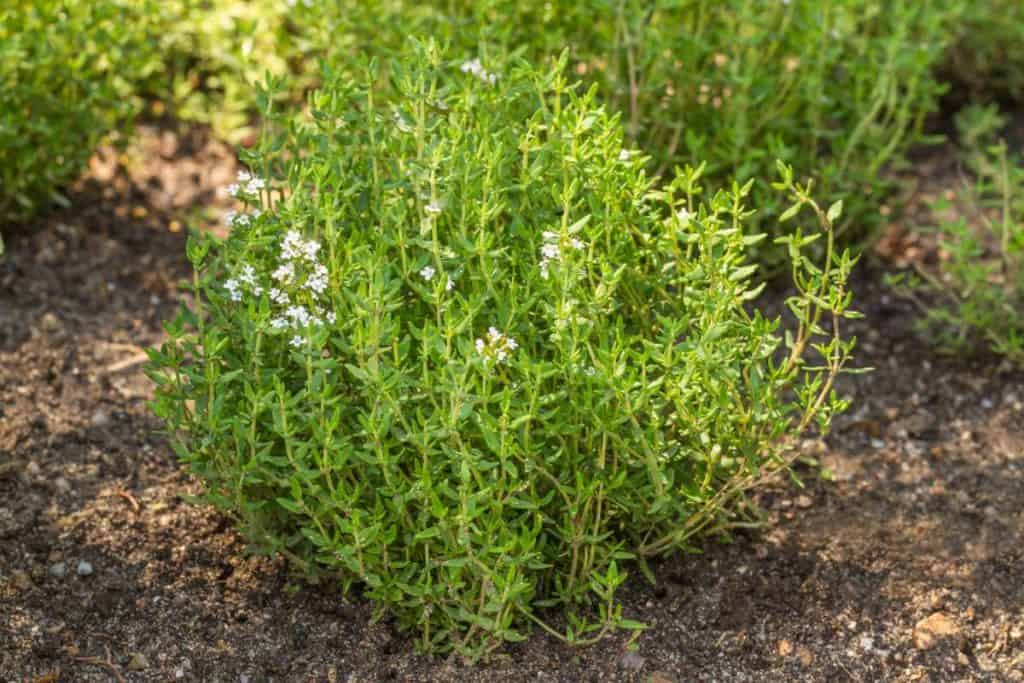
8. Bugloss (Boraginaceae)
In nature, bugloss grows on rocky hills and in open fields. This hardy ground cover can also thrive in sandy conditions, making it a good choice for seaside gardens.
The purple flowers of bugloss are attractive to bees, and the plant provides some early-season pollen and nectar. It is also deer resistant. So, if you’re looking for a ground cover that will both beautify and protect your garden, bugloss is an excellent option.
It grows best in full sun and can reach up to 12 inches (30.48 cm). That makes it an excellent choice to cover large areas. However, it is susceptible to powdery mildew, so you’ll need to monitor it if you plant it in a shaded area. Other issues to watch out for include rust and leaf spots.
If you want to plant bugloss as a ground cover, do so in the fall when its seeds have matured. You can also propagate it by dividing the roots of an established plant.
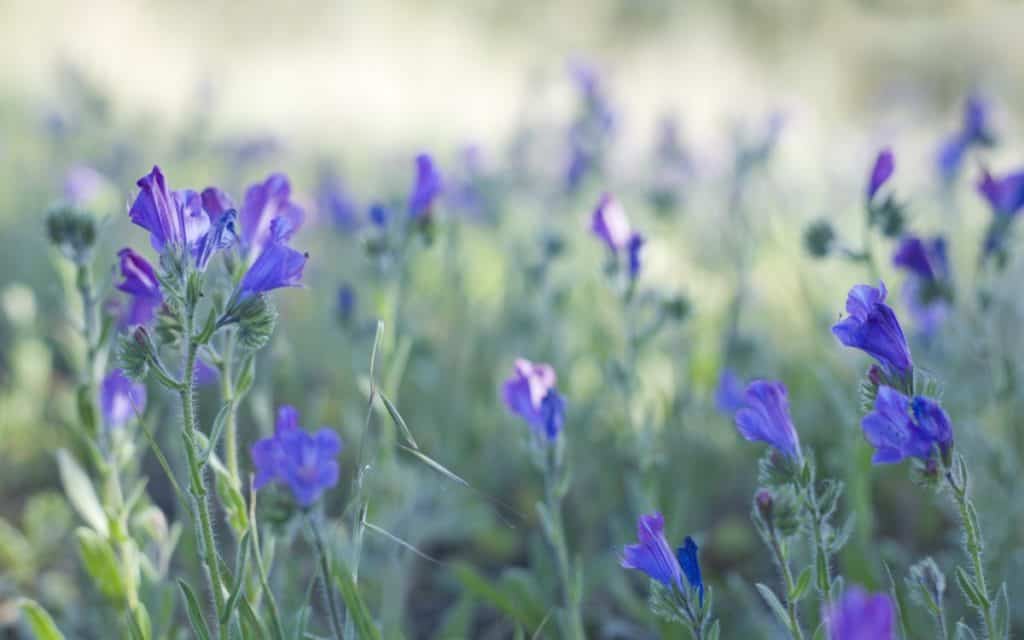
9. Dwarf Fountain Grass (Pennisetum alopecuroides)
Dwarf Fountain Grass is a short-lived perennial that grows tall between eight and 20 inches (50.8 cm). It has narrow leaves with pointed tips, green but can turn purple as they mature.
The plant blooms from late spring through early summer when its flowers appear above the foliage on stalks up to 12 inches (30.48 cm) high. The flowers are pink or purple, and they resemble bottle brushes when fully bloomed.
The dwarf grass is native to China, Japan, and Korea but has naturalized in much of North America since its introduction as an ornamental grass over 100 years ago. It was originally named Pennisetum alopecuroides, but it was reclassified in 2014 as a variety of Pennisetum setaceum.
It is also known by several common names, including Chinese Fountain Grass, Dwarf Fountain Grass, and Foxtail Fountain Grass. It spreads aggressively under the right conditions and can become invasive if left unchecked.

10. Goutweed (Aegopodium podagraria)
Goutweed spreads rapidly by runners, and it can quickly take over an area if not controlled. It is also resistant to many herbicides, making it difficult to get rid of once established.
This weed has small, heart-shaped leaves on top and silver underneath. The flowers are white and appear in late summer or early fall clusters.
Goutweed is native to Europe and Asia but has been introduced into North America, where it now thrives in moist areas, such as ditches and along the edges of ponds and streams.
If you have a problem with goutweed in your garden, the best way to get rid of it is by hand-pulling the plants when they are young and before they flower. Be sure to get all of the roots, or it will just grow again.
It grows to a height of between two feet tall and three feet wide, so it’s best to plant this in an area with plenty of room for growth.

11. Hedge Parsley (Torilis arvensis)
This shrubby herb grows best in full sun and reaches between two and three feet. It has lacy, dark green foliage and small, white flowers that appear in clusters in the late spring or early summer.
Its biggest enemies are drought and deer, so if you live in an area where deer are a problem, you’ll need to take precautions to protect your Hedge Parsley. You can protect it with a chicken-wire cage or spray it with a commercial deer repellent.
However, you might want to avoid using hedge parsley if you have dogs. Hedge Parsley is toxic to dogs, although it’s not usually fatal unless a large amount is ingested. If you insist on planting Hedge Parsley in an area where your dog has access, be sure to keep the plant out of reach.
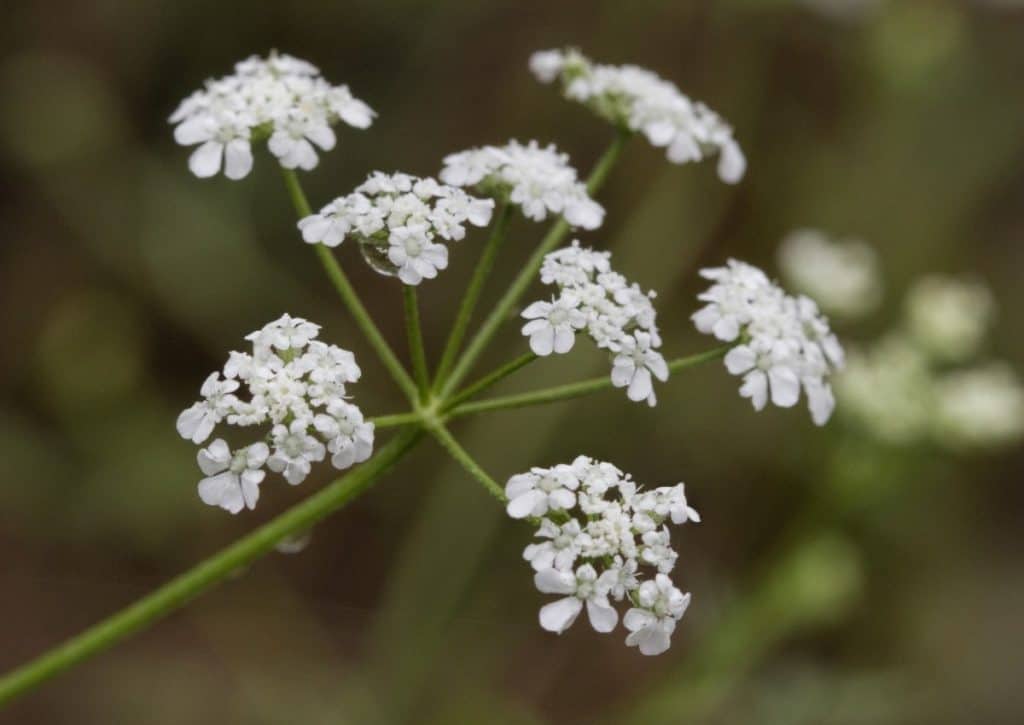
12. Sweet Woodruff (Galium odoratum)
This creeping ground cover does well in sand, moist soil, and partial shade. It is a fantastic choice if you want to add color in the spring when your garden is primarily green, and as a bonus, the leaves have a sweet scent.
Most people plant this in the spring, but you can also plant it in the fall. It will get about six to ten inches tall and grow best in zones three through eight.
Sweet Woodruff is surprisingly deer resistant, but it is susceptible to powdery mildew and rust. Keeping the plants well-watered and providing good air circulation can prevent these health issues.
Overall, you’ll find this a low-maintenance plant since it doesn’t require regular pruning. It is also perfect for container gardens. You might have a bit of a problem with the spreading habit–it can be a bit difficult to control. However, as long as you keep it away from other plants, this shouldn’t be an issue.
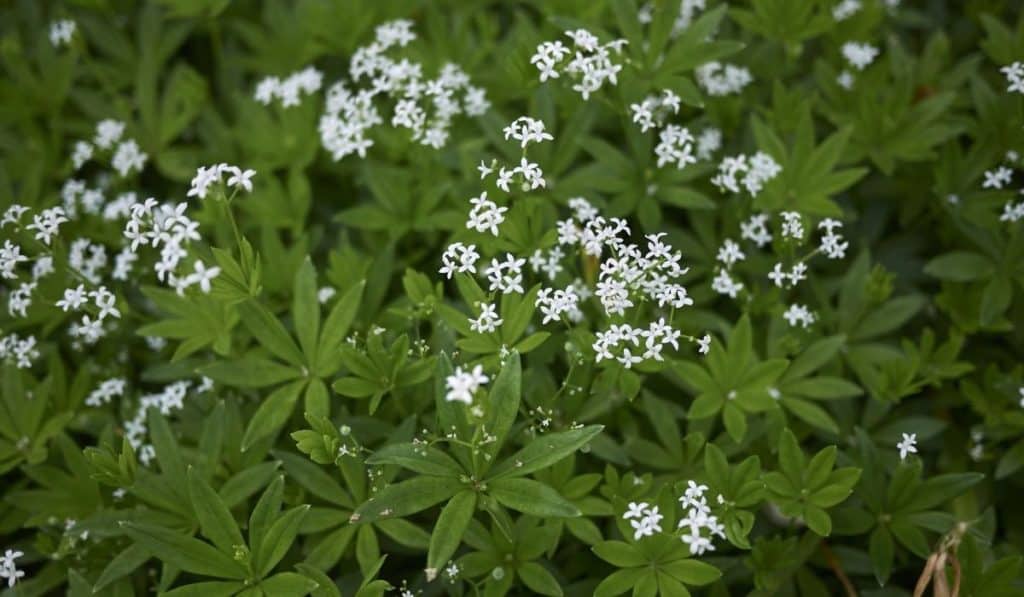
13. Speedwell (Veronica filiformis)
Speedwell is a perennial ground cover that can grow up to 15 inches (38.1 cm) tall and spread out as far as 3 feet (0.91 meter). It prefers full sun but will tolerate partial shade, too. This plant has blue flowers that bloom from spring through fall, so it adds color to your garden throughout the year.
Speedwell does well in various soils, including sand, and is resistant to deer. It requires regular watering, so make sure you keep this in mind if you live in an area with low rainfall.
This is a fast-growing plant, so it’s perfect for areas that need some coverage quickly. However, be aware that it can become invasive, so don’t plant it in places where other plants are susceptible to being choked out by this ground cover.
